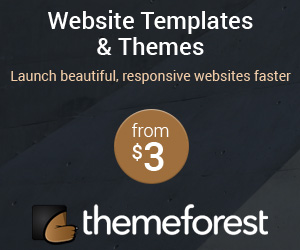
by G. Sehgal | Mar 10, 2015 | Small Business Website, Web Site Design, WordPress
Your small business is up and running and conventional wisdom says that you have to have an online presence if you want to be successful. But where do you start? Do you pay someone to develop a turnkey website for you? That can be expensive! If you decide to do it yourself, there are many things to take into consideration. Who will be your hosting provider? How will you handle web design? How will you manage the content on your website? And the list goes on. In this article, we will consider web design and how it can be accomplished on a shoestring budget.
Most small business owners do not have the knowledge or skill to develop a website using the basics such as HTML, XHTML, and CSS. However, that does not need to be a deterrent to developing an online presence. There are several avenues to accomplish this goal such as site builders that are available on the web such as wix.com. Most hosting providers also offer a site builder application. These sites do offer several attractive templates. However, they also have restrictions that make it both difficult and undesirable for many small businesses to utilize as their web presence. An alternative is to use WordPress as the platform for a small business website.
Many hosting providers have the feature of installing WordPress directly from the cPanel management tool. This is vital because of both its convenience and its efficiency. Today’s version of WordPress installs flawlessly. When WordPress upgrades their application, a user’s website will be updated automatically.

Image source
Installing WordPress is just the beginning. From there, the user must decide what theme to use for the site. The basic themes that come with WordPress are designed for use in a blog environment. After all, WordPress is known as a blog site. However, WordPress also has the flexibility to be used very effectively as a small business site utilizing third-party themes.
The WordPress platform offers a variety of features that are both easy to use and gives the small business operator a more sophisticated website design. One particular feature is the use of widgets to populate sidebars with various applications. Some of the more popular applications include a calendar, appointment request form, email opt-in form, text editor, slideshow, social media connections, videos, as well as several others.
Another aspect of the WordPress platform is the use of plug-ins. Plug-ins can provide additional functionality for a website. The standard install of WordPress comes with some basic plug-ins. However, third-party plug-ins provide even a greater degree of functionality. Some of the more popular third-party plug-ins include Contact Form 7, Rich Reviews, TablePress, and Really Simple CAPTCHA. Contact Form 7 gives the user the ability to create contact forms with greater flexibility than the standard WordPress contact form. Multiple contact forms can be created giving the user the ability to use different contact forms for various aspects of the site. Rich Reviews is an application where visitors to the website can offer comments to review content or products available on the site. TablePress is a means of incorporating tables into the pages of the site. If the user wants to verify that the person completing a contact form is an actual human being, the Really Simple CAPTCHA is an excellent addition. For an example of these features.
WordPress is a versatile and flexible website platform that is easy to use and an excellent way for the beginner to get his or her feet wet in website development. What we have covered in this article merely scratches the surface of what is available using the WordPress platform. If you are a small business operator looking to develop your first online presence, WordPress deserves your consideration.

by G. Sehgal | Mar 2, 2015 | Typography, Web Site Design
As soon as advertising appeared the need of new, modern and appealing typefaces emerged. While web pages became more and more dynamic, typography and web design advanced and become richer and more and more appealing to the reader and user-friendly for the owners. This is why many organizations started to develop this concept and taking it to a higher level in order to propel their messages.
However, texts have been and will be the main and the most constant part of websites and consequently typography is the very core of any website.
TYPOGRAPHY AND GOOD WEB DESIGNING
Typography
Typography is the art of typesetting for the purpose of making the text legible and eye-catching to the reader. In fact good typography can be essential in a web design project by providing the advantage of being easier to read and understand. The typeface selection can be critical and may give the wrong feeling to the reader, thus impacting the whole.
Web Design
Web Designing involves a complexity of skills and disciplines that combined can produce, develop and maintain websites. However, typography is the component that can or should make the readers continue to read and come back for more. A good web designer should always consider several essential aspects that make the difference as typography is indeed an indispensable part of web designing.
Here are the essential typography aspects to be considered for successful web designing projects:
- Set rules and stick to them– make a plan and stick to it. Be consistent in using designs, bullets and formatting.
- Understand the content of your website and understand your audience’s intent;
- Establish a coherent hierarchy – clearly indicate where the reader should start; use highlights for emphasis and make the white spaces work for you;
- Alignment – confers a classy look and it is easier to read an integrated text.
- Integrate the text into your website – connect your text to the design of the website and maintain the consistency. Consistency makes your work look professional and keeps the readers focused.
- The text must breathe – the letters need their own spaces. Typography creates the atmosphere by telling a story that is beyond the text. Do not overcrowd your web space as it can chase away readers.
- Carefully use colors for your typefaces – support your readers by choosing your background color significantly different from the type colors;
- Consider a typeface that keeps people focused on the content and not on the formatting of your website
- Scaling is also an important as there are many users who zoom in or out a lot. This is why your typography should be able to scale well.
- Continue to learn and never settle for less – never stop looking for new tips and hints regarding typography and web designing as they are continuously changing and developing.
Content represents over 95% of a website so it is accurate to say that 90% of web design is represented by the art of displaying content in a comprehensible and readable manner, Typography for short. It influences the visitors and readers of your site. When typography is done right it can bring positive outcomes for the site owners.
Too much color, too many font styles, an overcrowded page can chase away readers. Use the colors, the font styles and the space of your web page in your favor, emphasizing and bolding only the important parts maintaining the reader connected to your content. Bullet lists are also helpful for the reader to easily surf through your content.
Legibility & Readability
While legibility is the main concern of the typeface designer ensuring that glyphs share the same design features, readability is the primary concern of the web page owner. Therefore, the web designer needs to be sure that every glyph, typeface or text related item share the particularities of the same weight, style and width.
Why Typography is so important?
There are many nonchalant voices saying that typography is just about selecting the prettiest type of font, the Canadian typographer R. Bringhurst defines typography as “the craft of endowing human language with a durable visual form”. So, this art and technique is influencing all the web design elements such as color, layout and space. The main duty of typography is to ensure readability and comprehension. Readability is the trigger for the evolution of typography.
Effective typography means successful web design
The efficiency of typography is constantly under assessment in order to find out the new trends that emerge from the reader’s preferences. This type of assessment concluded that the readers nowadays prefer typefaces like Verdana, Arial and Comic Sans. Experiments have been conducted and the results concluded that by displaying the same paragraph in different typefaces readers are influenced and tend to change their choices depending on the typeface they are seeing.
Typography is equally important as the content and it is an essential part of a good web design. By spending more time on arranging text, choosing the most suitable and readable style and using the white space to obtain a user-friendly web page you will encourage people to visit, read and stay connected and return to your web page to see what is new.









